As the new Metro Tunnel in Melbourne approaches completion, the inefficiencies of the existing City Loop have began to get more attention, with a project called the ‘City Loop Reconfiguration’ involving two short tunnel connections flagged as a way to fix them. So why is the City Loop inefficient to start with, and how can such a seemingly minor change to it’s operation fix them?
Current state
The City Loop isn’t one tunnel but a network of four separate tunnels that encircle the Melbourne CBD, with train services from different lines taking different routes around it at different times of day, before finally arriving at Flinders Street.
A result of this is that inbound trains full of passengers will slowly empty out as they make their way around the entire loop.
Before arriving at Flinders Street Station almost empty.
A loading pattern shown in this diagram from the 2012 PTV Network Development Plan.
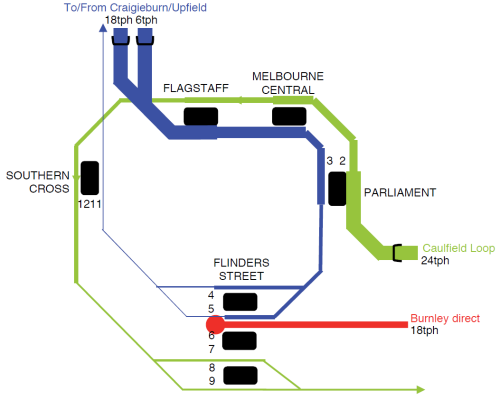
Figure 16-2: Existing City Loop operation and train loadings – 2012 PTV Network Development Plan
Which goes on to say:
Constraints in the Northern Group revolve around the need for Craigieburn and Upfield lines to merge in the City Loop, thereby restricting the combined frequency to 24 trains per hour.
On the Burnley Group, the terminating and turning back of Burnley local trains at Flinders Street limits capacity on all Burnley Group local lines.
The current routing and efficiency of the loop and terminating lines in the city is an inefficient use of resources (trains and infrastructure), as demonstrated in Figure 16-2. The line thickness designates an indicative train loading for the AM peak period.
From the above figure, it can be seen that the loop operation is inefficient because all trains entering the loop will be overloaded. However, by the time they run across the viaduct between Flinders Street and Southern Cross, they will be nearly empty, which is a waste of valuable central area track capacity.
In addition, Burnley local services (the Glen Waverley and Alamein lines) that run direct to and terminate at Flinders Street will be underutilised as many passengers will transfer onto loop services at Richmond, which again is a sub-optimal use of trains and infrastructure.
And a solution?
The 2008 East West Rail Link ‘Analysis on Rail Capacity’ report introduced a solution – reconfiguring the City Loop tunnels.
Northern – Burnley loops connected
The existing four city loop tunnels operate independently from each other. Rather than operating each group independently, this option would see trains running between North Melbourne and Richmond, either via Flinders Street (FSS) and Southern Cross (SXS), or via the Melbourne Underground Rail Loop (MURL). For this option, the following operations could be achieved:
- Sydenham to Glen Waverley / Alamein / Blackburn via FSS, SXS
- Craigieburn / Upfield to Belgrave / Lilydale via MURL
Operations would assume that layovers and crew changes would take place at suburban termini rather than at Flinders Street or Southern Cross.
By allowing Burnley and Northern trains travelling in the Melbourne Underground Rail Loop (MURL) to continue on to North Melbourne or Richmond respectively rather than looping around to Flinders Street, track and platform capacity at Southern Cross, Flinders Street and across the viaduct would be released. In association with discontinuing the practice of reversing trains at Flinders Street station, this would allow for direct services from each group to be linked.
The spare capacity at Flinders Street station could be used for services from Caulfield and Clifton Hill groups, and allow for network expansion.
The infrastructure works required to enable Northern-Burnley operations as shown include:
- new tunnel connection from the Burnley loop tunnel west of Flagstaff to the existing western loop portal south of North Melbourne;
- new tunnel connection from the Northern loop tunnel south of Parliament to a new portal situated in the Jolimont rail yards and connected to existing Burnley down track;
- new platform 7 at North Melbourne, forming an island platform with existing platform 6;
- track slewing on either side of North Melbourne to enable sectorisation of lines.
Passenger impacts would need to be carefully managed due to need to terminate Werribee/Williamstown trains at Southern Cross. Furthermore, this option does not offer new travel opportunities or CBD connectivity, and introduces some risk of overcrowding issues which would need special attention during the design of this option.
This option would allow the metropolitan rail network to transport around 114,000 passengers into the CBD in the morning peak hour.
And the concept was further refined in the 2012 PTV Network Development Plan.
The removal of loop operations on the Northern and Caulfield loops and the connection between specific lines on each side of the city will result in the creation of two new Cross-City lines, with capacity for an additional 30 trains per hour in the peak (Craigieburn – more than six trains per hour, Upfield and future Northern lines – more than 18 trains per hour and Burnley local lines – more than six trains per hour)
High level scope of works:
- New tunnel link between Flagstaff (Caulfield loop) and North Melbourne platform 2. This will enable trains from Craigieburn to run into the Caulfield loop to Flagstaff, then exit via the existing portal at Richmond platform 5 and continue on to Frankston via Parliament
- New tunnel link between Parliament (Northern loop) and Richmond platform 3. This will enable trains from Frankston to run into the Northern loop to Parliament, then exit via the existing western portal at North Melbourne on to Craigieburn via Flagstaff
- Enabling works for new tunnel link from City Circle loop to down Burnley Through line to facilitate through running from Clifton Hill Loop Line to Ringwood Loop Line for the purposes of stabling and maintenance
- New fly-over from the Upfield line onto the through suburban lines at North Melbourne (over other Northern Group tracks)
- Bi-directional signalling at North Melbourne platform 1 to enable operation of city-bound and outbound Seymour services to Southern Cross
The package of works identified for this period will provide the following benefits:
- Free up two viaduct tracks following removal of loop routing, effectively providing two new tracks through the city
- Provide greater capacity for growing passenger demand on Craigieburn and Upfield lines and all Burnley express and local lines
- Enhance service reliability through the full sectorisation of lines through the city and suburban sections
- Enable quicker travel times for outbound journeys on the Burnley express line through segregation from local stopping services
- Provide faster cross-town journeys by eliminating the need for passengers to backtrack or suffer layover time at Flinders Street
- Extend the network connectivity for Burnley local services by providing direct through services to Southern Cross and the west
- Facilitate easier cross-town travel through the city for all northern lines to employment, education and retail precincts clustered in the east
- Provide a better balance in passenger loadings on trains bound for either the underground city stations (Flagstaff, Melbourne Central and Parliament) or the surface stations (Southern Cross and Flinders Street), as opposed to the heavily loaded loop services and relatively lightly loaded direct services terminating at Flinders Street
- Simplify the rail network by providing direct access to and from all city stations at all times of the day, reducing current confusion and inconvenience associated with daytime loop reversals
- Increase efficiency of train movements through the city by removing loop services
- Reduce train congestion at Flinders Street by eliminating terminating and turnback manoeuvers for Burnley local services, thereby increasing train efficiency through reduced train fleet requirements
- Enable the rationalisation of track and removal of excess point work in the central area to reduce maintenance requirements
- Provide network capacity to enable new rail corridors to be built in future years to serve new developments in the northern outskirts as well as an express link to Melbourne Airport
Along with a clear visual showing how two small sections of tunnel result in such a large uplift in the overall passenger capacity.
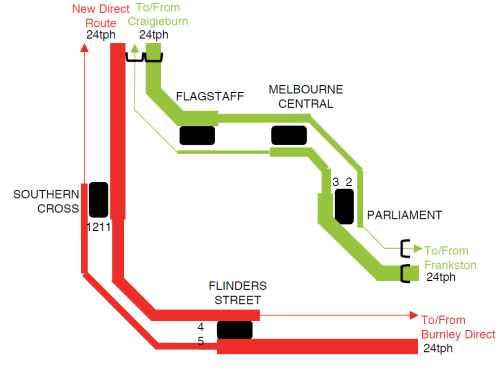
Figure 16-3: Proposed reconfigured loop operation and train loadings – 2012 PTV Network Development Plan
While 2021 Infrastructure Victoria spoke of the best time to deliver the City Loop reconfiguration project – now.
The Melbourne Metro Tunnel will enable some new services on Craigieburn and Upfield lines, but these would reach capacity by the mid-2030s. If these new services were introduced without
reconfiguring the City Loop first, they would be heavily disrupted for long periods during the project’s construction, and affect many more passengers.Reconfiguring the City Loop immediately after completing the Melbourne Metro Tunnel minimises disruptions to passengers, particularly as the realignment of the Cranbourne and Pakenham services through the Melbourne Metro Tunnel upon opening can leave one of the two loop tunnels affected by this project empty. The Victorian Government should start detailed design and planning quickly to identify critical works to undertake before the Melbourne Metro Tunnel is completed. This can avoid significant disruption to the network.
The window of opportunity to deliver the City Loop reconfiguration project will close as demand continues to increase, and the network may only temporarily have enough spare capacity to change train service patterns during construction to minimise passenger impacts.
The Victorian Government should complete a business case for the project within the next two years. Reconfiguring the City Loop would enable more frequent and reliable services by creating two high frequency separated lines connecting northern and south-eastern areas. The business case should consider timing, including starting the project immediately after the Melbourne Metro Tunnel is completed.
Footnote: passenger capacity at the stations themselves
Turns out running more trains isn’t the silver bullet to increasing the number of passengers able to travel – capacity on the escalators and through ticket gates at railway stations is another.
A problem also flagged in the 2012 PTV Network Development Plan:
16.8 City Loop station upgrades
Service frequencies through the City Loop stations will increase with the provision of high capacity signalling on the Clifton Hill Group and better utilisation of existing signalling systems on the other loops. Moreover, the connection of the Northern and Caulfield loops will result in a higher proportion of train loads alighting at the City Loop stations.
Preliminary investigations completed to date, utilising simulation software and focused on Parliament station at this stage, have indicated that some additional escalator capacity will be required as well as an enlargement of the forecourt areas and an increased number of barriers at the main entrances.
At this stage of the investigation, platform capacities do not appear to be an issue even though these are causing some concern at present. This is due to the fact that in future all trains through a given platform will be running to no more than two stopping patterns and destinations.
It is currently considered that additional escalator capacity can be provided by insertion of new escalators into the existing escalator banks. The extension of the forecourt areas is an at-surface construction issue that should not be overly complex.
Key benefits
• Ensure station access and platform capacity can support passenger movements at peak times
• Reduced congestion and therefore improved travel times at key CBD stations.High level scope of works
• Install new escalators at City Loop stations
• Widen forecourt areas and install additional ticket barriers where necessary to improve throughput.
And which is being addressed at Melbourne Central station as part of the Metro Tunnel project, with two new escalators being installed between the concourse and platform 1/2 to cater for the increased number of interchange passengers once the adjacent State Library station opens.
Further reading
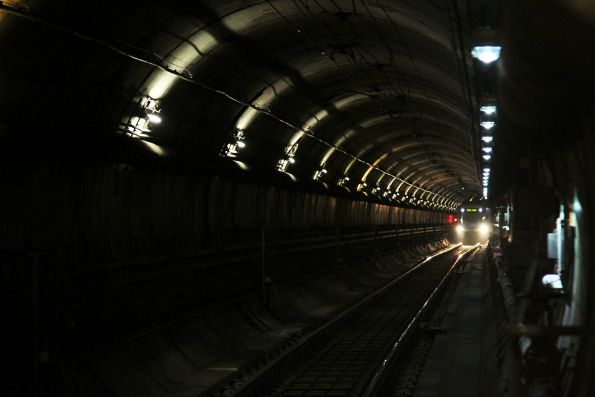
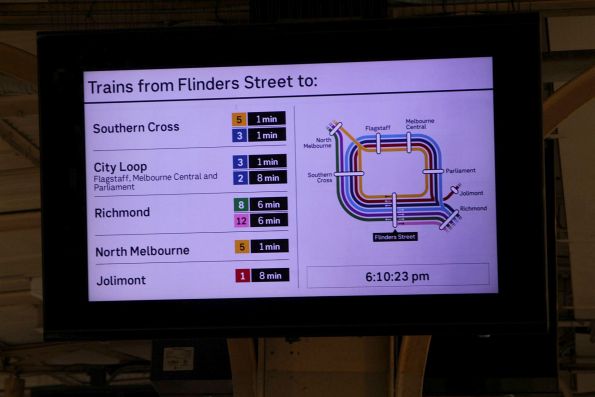
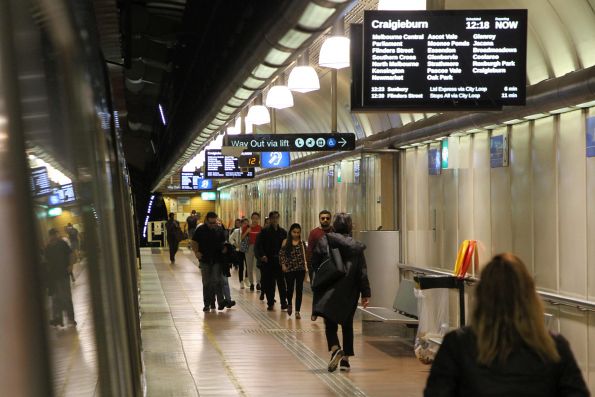
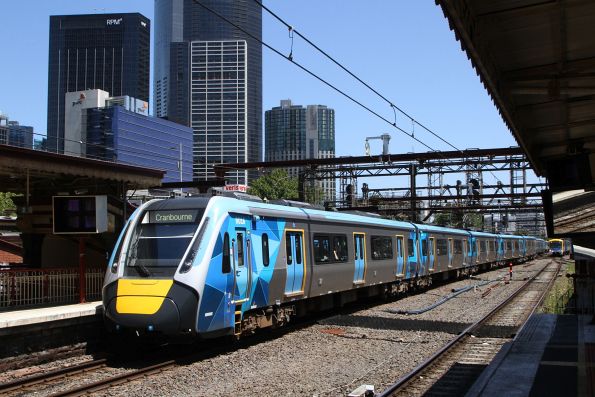
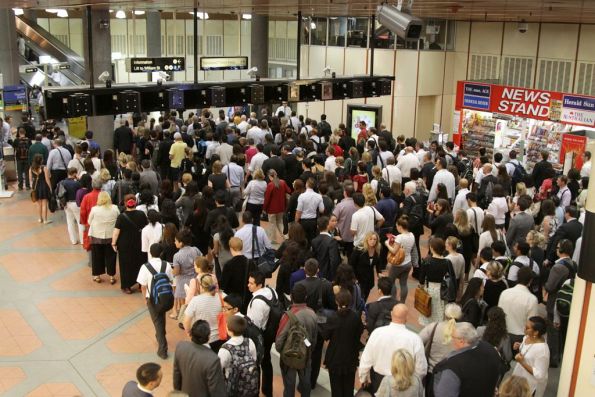
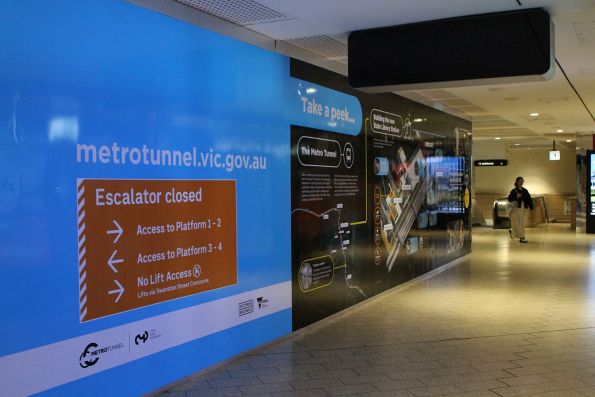

Is there a professional individual or company that can analysis Metro Tunnels for efficiency.
A group of professionals including former transport planner and academics are planning an underground CBD rail loop for Adelaide, having seen their plan I believe it has serious shortfalls, the main problem that the rail loop bypasses the most popular entertainment and hospitality precinct in Adelaide, the East End.
The current plan is simply to make use of Hindmarsh Square to save costs and then expect commuters to walk the remaining distance.
The group didn’t like my appraisal so won’t let me be involved.
I need a professional in underground CBD rail Loop to look at both solutions.
TBH Figure 16-3 gives me no confidence that they’ve seriously thought about how passengers will actually use their reconfigured lines.
Half of the Frankston passengers getting off at Parliament? Half of the Craigieburn passengers getting off at Flagstaff?
This is actually *exactly* the same flawed thinking that gave us the City Loop in the first place.
The thinking starts from “we have an operational problem, how do we fix it?” and proceeds from there.
In the case of the city loop, the operational problem was that demand was inbalanced between the east/south and north/west (making through running inefficient), and that the major between peak sidings were at Flinders St (limitting capacity due to the necessary shunting movements). The result was the concept of four uni-directional tunnels feeding directly into the stabling sidings, with a midday change of direction.
The operational problems driving these proposals are clear from the extracts you’ve included.
But note the absence of any consideration of where passengers are trying to get to, where they’ll need to change in order to do so, and what will need to be built or services that will need to be provided to make these changes work for the passengers.
Great article, this definitely adds some welcome explanation and context to the PTV Network Development Plan. I experimented in my mind with an admittedly less realistic version of the City Loop Reconfiguration which requires re-routing part of the Upfield line.
https://unfeasibleideas.blogspot.com/2022/02/an-alternative-city-loop-reconfiguration.html
I’m slightly confused. Wouldn’t this mean it would be significantly more inconvenient for someone travelling from, say, Craigieburn, who wants to transfer to a v/line service at Flinders Street, or someone travelling from Frankston to Collingwood, or from Belgrave to work near Parliament? This just seems like a huge inconvenience for a large number of travellers.
No more inconvenient than the current arrangement is for any passenger wanting to do the reverse of your suggestion. You can never have a train split into two directions at once. And the solution is the same as current for all those passengers: change at North Melbourne or at Richmond for an appropriate train going the direction you want. At the moment, I come into the city on the Glen Waverley Line (which all run direct to Flinders) so I have to change at Richmond for a train which runs through the City Loop. The change is exactly as inconvenient, just for a different group of people; yet improves the capacity of the overall system and also reduces the inconvenience of anyone wanting to take cross-city travel.
I’m assuming the consultants are well across myki travel data when they design all this. I live pretty close to the city (Collingwood) travelling to and from work on Frankston line. The am is okay into Flinders and change , the pm is dreadful, you have to change at Caulfield, South Yarra or Richmond to get a city loop train (if they are running) and then change again at Parliament to get Mernda train. If I’m in the city i have to go around the loop just to get to Collingwood. Its almost faster to walk !
Marcus, I don’t understand how this will alleviate congestion on City Loop stations. Isn’t the fact that Flagstaff, Melbourne Central, and Parliament being the preferred stations the inherent problem in this situation?
By reconfiguring the City Loop in the manner that was pictured, wouldn’t people on the newly created Burnley Direct simply change onto the Caulfield/Northern groups at North Melbourne or Richmond? – resulting in congestion at City Loop stations once again? Another commenter also highlighted that the diagram may not depict actual passenger activity which is a similar issue. We could end up with viaduct trains being empty, and the City Loop congested once again because people simply prefer going to Flagstaff, Melbourne Central, and Parliament rather than Flinders St or Southern Cross. Not everyone wants to take a direct train from Camberwell to Craigieburn for example – many want to go to the city.